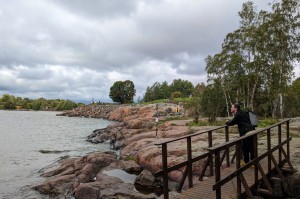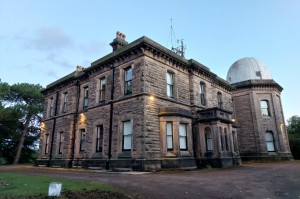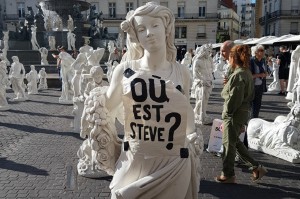Field Trip: A Guide To Reykjavík, Iceland

Spaceship-like art galleries, epic waterfalls and vegetarian street food: if a modern, relaxing city break sounds good, look no further than the Icelandic capital…
Iceland in the summertime: 24-hour daylight, and just about warm enough for a light coat and sunglasses. Step off the plane in Keflavik anytime during June to August and all you can see are stunning black lava fields, purple lupins and green grass; this is, by all accounts, as far away from the winter experience as you can get, and one all travellers should try.
Our first visit to Iceland took us, inevitably, to the capital and largest city on the island: Reykjavík. Flying into Keflavik Airport, it was easy to buy bus tickets straight to the city centre, about 45 minutes away. Our first impression? It’s both pretty and barren, in a wind-blown, Nordic seaside kind-of-way. With a population of just over 120,000 people, this is a small place; you can easily walk to all the main attractions within about 30 minutes. Despite being centred around just two rambling high streets, filled with boutique shops and alternative coffee shops, the fact that Reykjavík features an expansive harbour (above) surrounded by snow-capped mountains makes it feel exposed and exciting. Nature is never very far away.
Being greedy visitors, our first priorities are always good food and coffee, and there’s an abundance here. Take our advice and leave the puffin and whale for other tourists to eat — there are a lot of restaurants in the city centre that specialise in ‘traditional’ Icelandic meats, but we got the impression that the locals don’t really partake or approve of the ethical or environmental impact. Despite warnings about cost, we found a lot of variety and value for money, even along main high street Laugavegur (below). Check out the big breakfast specials that come with hotdogs (a national favourite) and pancakes at Solon (Bankastraeti 7a) for about £10; at the somewhat healthier cafe Durum (Laugavegur 42), £5 fry ups come with orange slices and the best local granary bread.
Coffee, we found out, is great everywhere: the best is at (surprisingly) Iceland’s oldest and largest chain bookshop, Eymundsson (Waterstones, take note). There are a few dotted around and it’s a great place to discover the best in Nordic Noir from a comfy chair. If you like your coffee to come music-free and accompanied by some local contemporary art, then the famous wood-clad Mokka-Kaffi (Skólavörðustíg 3A) is your best bet.
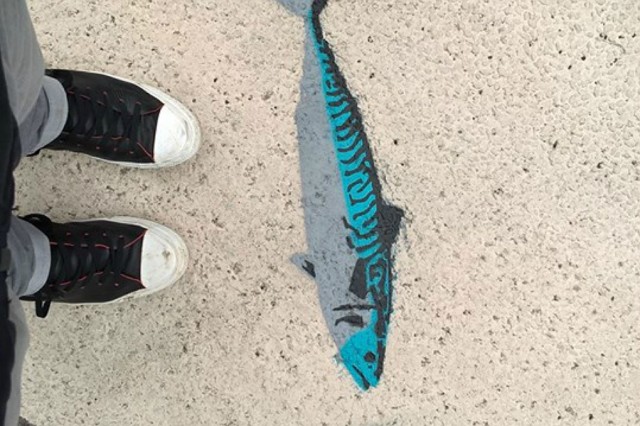
Our favourite place for lunch was award-winning vegetarian restaurant Glo (108 Reykavik): think vibrant street food, fresh juices and homemade cake. As it gets later, The Dude-themed Lebowski Bar (Laugavegur 20a) does a mean White Russian; you can also get a beer and Burger of the Month (‘Jurassic Pork’ when we were there) for around £10. For something a bit more special, burst the budget at new harbour-side contemporary fish restaurant Verbúð 11 (Geirsgata 3); we went for a friend’s birthday and it was a really memorable way to sample the catch of the day, prepared with care and an artistic flourish.
In summer-time, it simply doesn’t get dark, which makes Reykjavík awesome for a night out. If beer and dancing is on the cards, we’d recommend Kaffibarinn (Bergstaðastræti 1); rumoured (we still don’t know for sure) to be owned by Blur’s Damon Albarn, and oozing dirty cool, it’s the best bar in Reykjavik for local ale (around £5 per pint), free bar snacks, and good conversation. Come midnight, the music gets cranked up and the chairs pushed back to make room for more jolly customers.
If you want to work off all that food, we’d recommend swimming: Icelanders love their thermal pools, and now so do we. There are 17 in Reykjavik alone (see this handy guide for ones near you). Heated by natural thermal energy (and offering a choice of temperatures from 38° to over 40°C, depending on how hot you like it), the pools are relaxing, quiet, really clean, and you can even sunbathe at the outdoor ones.
Once we settled in, we were keen to get a grasp of what art and culture was on offer in Reykjavik. Disappointed that our Rough Guide didn’t really cover local galleries and museums, we were pleased to see lots of free guides available in cafes and hotels, including WhatsOn. If you want to combine swimming with art (as we did), try the Reykjavík City Card, which for around £20 (48 hours), includes free entry to a selection of museums and galleries, all swimming pools, unlimited bus travel, a ferry trip to Viðey art island and other various discounts.
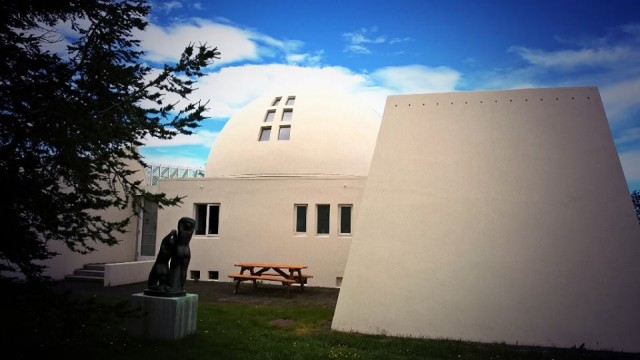
We visited Ásmundarsafn (above, Sigtún), the former home and studio of Iceland’s favourite modern sculptor, Ásmundur Sveinsson (1893-1982), it remains one of our favourite memories of the entire trip. Set in a sculpture garden of Sveinsson’s work, Ásmundarsafn resembles a glowing white spaceship crossed with an Egyptian tomb: Sveinsson took global inspiration and used government grants to build this space himself.
The £6 entry also gets you into Hafnarhús and Kjarvalsstaðir galleries that same day; we only had time for one, so chose Hafnarhús (Tryggvagata 17). An impressive contemporary gallery space and former fishery warehouse back at the harbour, it shows a range of experimental temporary exhibitions. While we were there, we saw a superb Richard Serra retrospective focussing on his environmental artwork, Áfangar, on the aforementioned Viðey island; Magnús Sigurðarson’s Process & Pretense, which utilised the huge gallery space to great effect with atmospheric and amusing performance, projected onto sloping walls; the terrifying Kathy Clark: bears; truths… (a tortured mind, say no more); and Kunstschlager, an artist-led studio group who lost their building last year, and now exhibit pop-up shows in various locations in Iceland and Europe. The latter in particular offered an entertaining and irreverent insight into the local contemporary art scene.
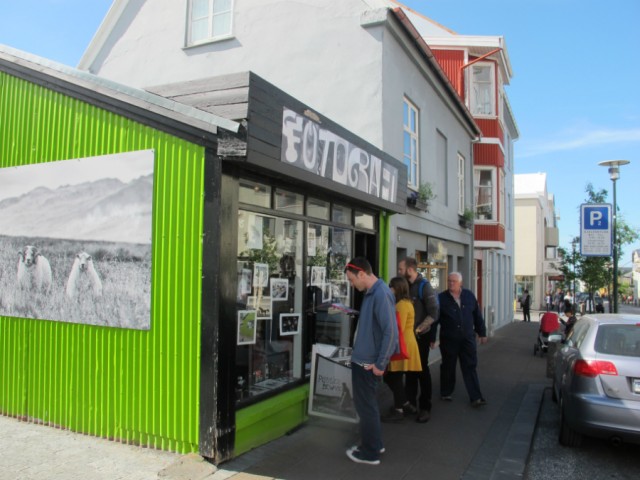
Another must-see is the award-winning Harpa Concert Hall; a relatively new addition to the harbour, there’s a great range of theatre, live music and performance on offer, in addition to being a beautiful building. Designed by Danish architectural firm Henning Larsen Architects and Icelandic architectural firm Batteríið Architects, it’s a geometric glass hive that welcomes natural light in the day and dazzles with electric light shows at night.
Love street photography? Fótógrafí gallery (above, Skólavörðustígur), owned by artist Ari Sigvaldason, was a great find; filled with vintage cameras and Sigvaldason’s life’s work, you can buy limited edition prints and Polaroids from just £3, and can see many of the shots just outside the door — including the sci-fi-esque Hallgrímskirkja church.
So lastly, where to stay? Accommodation is notoriously expensive in Reykjavík, regardless of star ratings; expect to pay around £100 per night. We invested in a Hostelling International Card and got about 10% off; coming in at around £60 per night for a private room with bathroom. After staying at various hostels and guesthouses, we’d recommend you try Reykjavik City Hostel (Sundlaugavegur 34), which was modern and clean, and had a great community atmosphere; it was also very close to the Laugardalur outdoor thermal pool (below) and Ásmundarsafn gallery. The more trendy CenterHotel Klöpp (Old West Side, 101 Reykjavík) offered a well-designed room with good facilities and breakfast for around £110 per night; situated just off the main high street, it was really handy if not a bit noisy from passing party-goers. All accommodation we used — indeed, everywhere we visited — had free wifi.
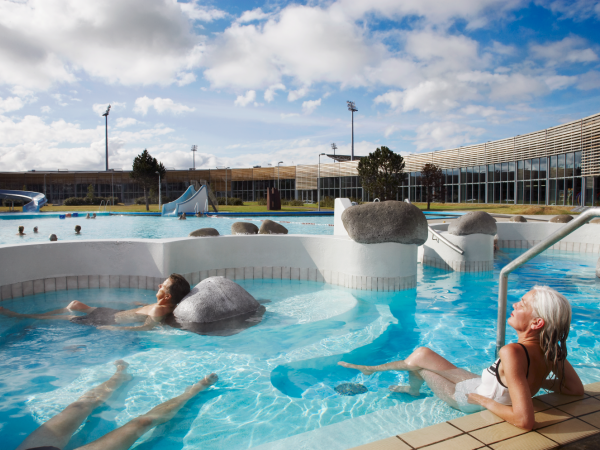
If you’ve had enough of the city, we’d recommend getting back to nature whilst in Reykjavík; it is surprisingly close to many areas of outstanding natural beauty. As with the food, we’d avoid any puffin or reindeer hunting (real activities for tourists); instead, try any of the many tours to local waterfalls, islands and jaw-dropping landscapes. We did the Golden Circle tour in around six hours with the largest bus company, Grayline (approx £45 per person), and saw tectonic plates at Þingvellir National Park, got soaked by the Gullfoss waterfall, and ooed-and-arrrhed with the other tourists at the Geysir geothermal area.
In conclusion: if you are looking for a city break that combines entertainment with real relaxation, then Reykjavík is for you. An awe-inspiring trip and one well recommended.
Laura Robertson (Editor)



